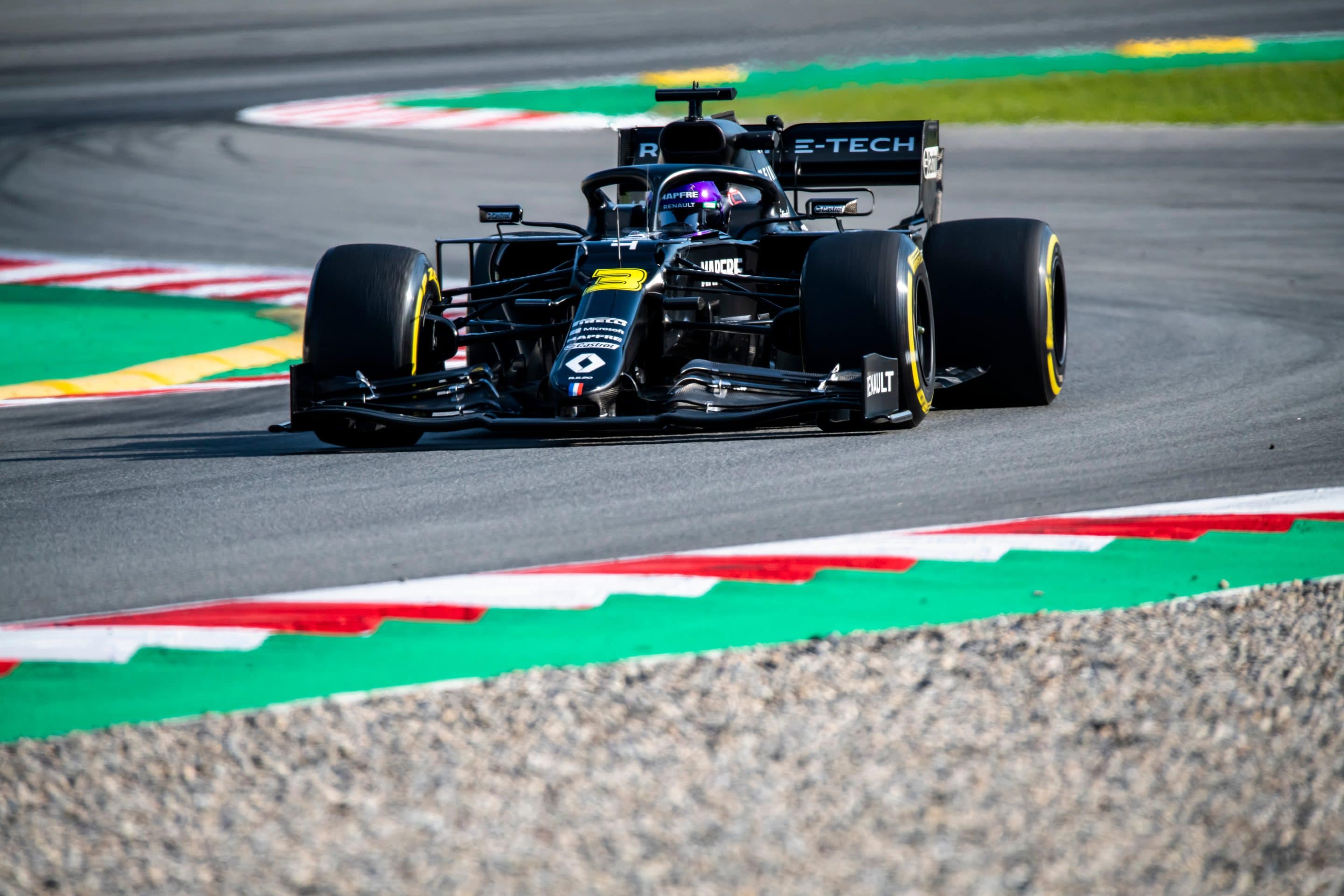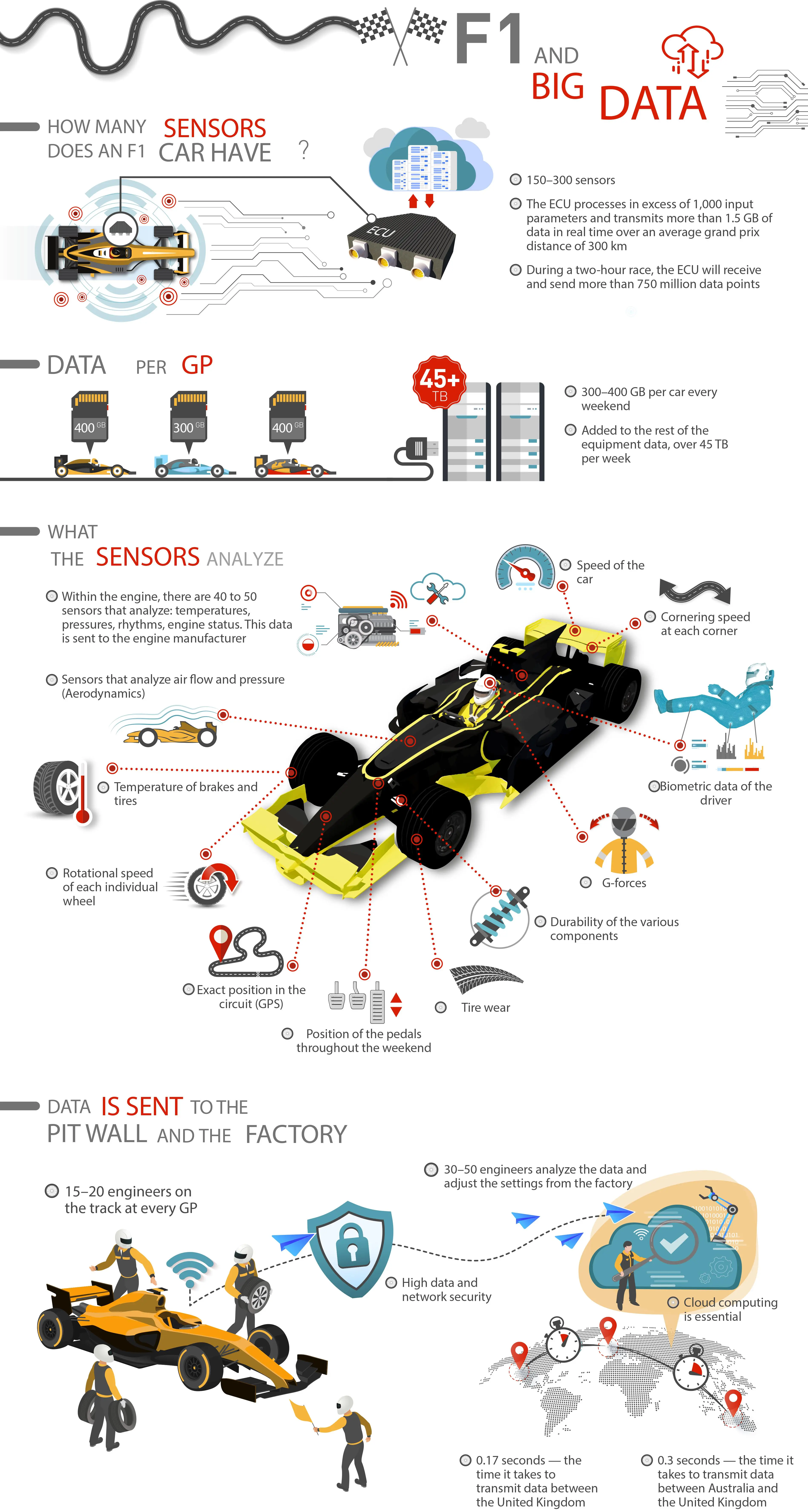INNOVATION | 28.02.2020
Data analysis in Formula 1: the difference between victory and defeat
Formula 1 is a global sport that was watched by an audience of over 1.7 billion people worldwide in 2019. But F1 is not just about sport.
It supports a multi-million-dollar industry based on cutting-edge technology, ranging from innovation in materials, aerodynamic design and sophisticated hybrid power units, to even the material from which the drivers’ clothing is made.
In the Formula 1 world, the most advanced communications and big data technologies are used extensively. It is the analysis of the vast amounts of data generated every minute of a Grand Prix weekend that makes the competition so special.
Without real-time big data analytics, the F1 we know today would be very different. Hundreds of data points per second are generated in all key areas of the cars. Meanwhile, engineers and data analysts—both at the circuit and in the factory thousands of miles away—compete to extract as much information as possible from them and weaponize that information in the fight for victory.
What data is generated by a Formula 1 car? How is the data transmitted by the hundreds of sensors on the cars analyzed? How is the information obtained vital to reaching the finish line a second or even millisecond before other racers?
300
GB of data generated
What data is generated at an F1 race weekend?
An enormous volume of data is generated by each individual car during a Formula 1 Grand Prix. It all began with stopwatches and chalkboards. Then, in the 1990s, things progressed toward basic computers—used to analyze the dozens of data points collected during testing—before finally reaching the mass data gathering and real-time analysis used today.
Formula 1 is a data-based industry and it has always been. However, it’s only in the last decade that simulations have reached such levels of sophistication and speed that they can drastically influence the results of a test.
Today, each car houses between 150 and 300 sensors, which generate millions of data points every weekend. In terms of numbers, around 300GB of data per car is generated each Grand Prix weekend. If we add this to the data generated by the rest of the team, it can amount to 40–50TB of data per week.
Handling this amount of data is certainly a demanding task and requires the most advanced technology for gathering the data itself, storing it securely and for external communication (mainly with the factory and the engineering departments). In addition, the computing power required for real-time data analysis is constantly increasing.
That’s why the different teams have partnered with companies specializing in cloud computing and data analytics. This means that the team is able to delegate part of the data analysis to its partners and focus purely on competing against the rest of the grid.

The millions of data points collected by the sensors in the car are analyzed and sent to the engineers. The results give the engineers the information that they need to continue developing enhancements for the aerodynamics, performance and handling of the cars, as well as to obtain valuable information about how to fine-tune the cars after each circuit.
To offer a better idea of how many data points are generated during an F1 race, here are a few examples. The combustion engine alone houses between 40 and 50 sensors that analyze all of the critical parameters, from instantaneous temperatures, pressure, rotational speed in revolutions per minute, engine status and many more.
This data is sent to the engine manufacturer for analysis in order to determine, for example, whether the engine will offer the durability required to finish the race, how likely the engine is to break down and to establish—to a certain degree of accuracy—when the engine will reach the end of its useful life.
Throughout the car we can find air flow and air pressure sensors, which are vital to the aerodynamics department; temperature sensors in the brakes and tires; sensors that record the instantaneous speed of the car, the cornering speed (on each of the circuit’s corners), the rotational speed of each wheel; and sensors that measure the g-force that the drivers are subjected to.
There are also sensors capable of relaying the position of the vehicle at each point of the circuit with a precision of centimeters; others that report the exact wear of each tire; others that report the exact position of the vehicle’s pedals; this information can be contrasted with the information coming from the engine, for example. There are even sensors that record the drivers’ biometric data (heart rate, breathing, sweating, etc.) and which are used to detect whether, for example, the driver is at risk of becoming dehydrated.
Big data analytics — crucial for victory
Analyzing this vast amount of data generated by each car and driver during a racing weekend is the difference between victory and defeat. Over the past few years, we have seen dozens of examples of how good data analysis has transformed races that were seemingly lost into successes.
The most spectacular example of all is perhaps the 2012 Brazilian Grand Prix. Sebastian Vettel, who was dominating the Grand Prix that year along with Fernando Alonso, needed to finish the race in the top three to win his third consecutive World Championship.
In the first lap, his car was hit from behind and Vettel came in last. The race seemed to be lost, but the engineers immediately stepped in — first of all checking whether or not his car would be able to finish the race. Before Vettel had even finished the first lap of the GP, his team knew the extent of the damage and that there was a balancing problem that could affect the tires and the engine.
A few laps later, the team found the solution to the problem. By the time Vettel made his first pit stop on the tenth lap, the mechanics knew how to fix it and the engineers had come up with a strategy for achieving the objective of winning the World Championship. Passing the checkered flag in sixth place, Vettel became the youngest three-time Formula 1 world champion in history, finishing three points ahead of Fernando Alonso, who narrowly missed out on his third world title.
This example aside, at the Formula 1 Grand Prix, big data analytics is an essential tool for car development, race strategy design and for improving the overall performance of the car and the driver, one fraction of a second at a time.


